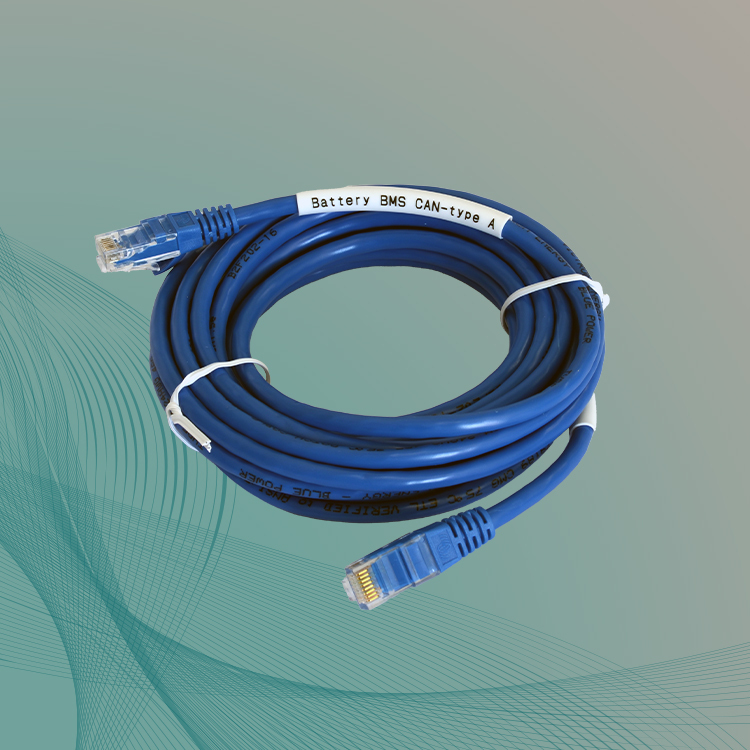


.webp)
.webp)
Overview and Application
The Victron VE.Can to CAN-bus BMS cable is an accessory that enables customers to use third-party batteries with their Victron-based ESS (Energy Storage System).
Specifically, the interface cable is used to connect a CAN-bus-enabled battery, such as the Pylontech US5000, to a Victron GX device, such as the Cerbo GX.
The type A cable (ASS030710050) works with popular energy storage batteries such as the BYD B-Box, TBB ES100 and Pylontech US2000C/US3000C/US5000C/UP5000/Force-L series of products.
Installation
The side labelled “CAN-bus BMS” should be plugged into the (master) battery CAN bus port. The other side, labelled “VE.Can” must be plugged into either the VE.Can port, or the BMS-Can port of the Victron GX device.
Both port types (VE.Can and BMS-Can) on a GX Device can be configured for use with a CAN-bus BMS-connected third-party battery.
For the specific configuration for your battery, please refer to the manufacturer’s manual for the battery.
Type A cable Pin-out
The table below details the pin-out of the Type A cable.
|
Function |
Victron VE.Can side |
Battery side |
|
GND |
Pin 3 |
Pin 6 |
|
CAN-L |
Pin 8 |
Pin 5 |
|
CAN-H |
Pin 7 |
Pin 4 |
Custom cable considerations
Please note, that Victron strongly recommends using this cable whenever possible unless the location necessitates creating a custom (i.e. longer) cable.
It’s possible to make a compatible cable if absolutely necessary, but custom-made cables often cause hard-to-diagnose problems.
Notes on compatibility with DIY batteries and self-built BMSes
Batteries using a BMS that blocks charge/discharge current or sets CCL to 0 when the battery is full can trigger a number of confusing or misleading inverter/charger warnings and alarms.
For example, the Victron inverter/charger can report overload conditions with little load, resulting in a lot of time and effort troubleshooting the fault, only for the inverter to work perfectly when on a test bench, and then discovering the actual cause is a custom BMS with a DIY battery.
Another common problem that can occur as a battery becomes fully charged is that Victron requires the BMS to change the Charge Voltage Limit (CVL) to restrict the power flowing to the battery. If, however, the BMS attempts to restrict power using the Charge Current Limit without adjusting the Charge Voltage Limit, this can trigger Overcharge, Overvoltage or Overcurrent warnings.
The only difference between the two cables is the pin-out, please click "Read more" for details ...
Remarks, reviews & ratings